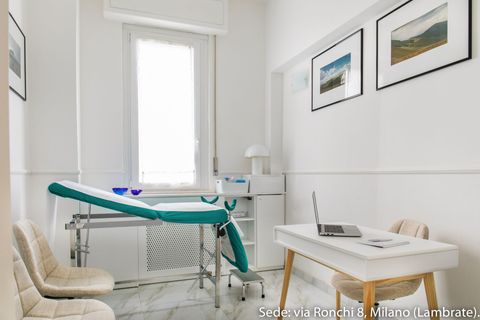Gynecologist Surgeon, Specialist in Gynecology in Milan
Consultation on Infertility and Contraception, Treatment of Gynecological Pathologies
In the gynecological field, Dr. Mattace Raso provides his consultation on couple infertility, genital infections, contraception (intrauterine device - IUD - insertion), treatment of gynecological pathologies (polycystic ovary syndrome, endometriosis, ovarian cysts, fibroids, uterine polyps), and menopause disorder treatment. He practices his outpatient activity in Milan and Melegnano.
- In Milan at:
- Milan Gynecological Studio, at Via Ronchi 8, raised floor, in front of Lambrate railway and metro station exit, on the side of Via Rombon. Wheelchair accessible.
- In Melegnano at:
- Medical office located in the center at Via Castellini 63, center staircase F, 9th floor, 3 elevators available, wheelchair accessible.
DIATHERMOCOAGULATION (DTC)
WHEN IS DIATHERMOCOAGULATION (DTC) USED?
Diathermocoagulation (DTC) is a highly effective technique that can be performed relatively quickly, and its results are always satisfactory.
It is used in the selective treatment of small skin lesions: pendulous fibroids, seborrheic keratoses, actinic keratoses, filiform warts, or vascular lesions (such as ruby angiomas, spider naevi), papillomas, genital condylomas, cock's combs, etc. Benign lesions that do not require surgical removal with histological examination can be treated. In the gynecological field, diathermocoagulation is mainly used for the removal of genital condylomas, also known as "venereal warts" or "genital warts," as they represent a highly contagious sexually transmitted disease. Condylomas are highly infectious, both self-infectious (rapid growth in the area near the initial lesion) and hetero-infectious, meaning towards partners with whom there is sexual contact, even if not complete and without protection. Genital condylomas are visible lesions, appearing as small rough growths, single or multiple, located on the skin and/or mucous membranes of the male and female genital organs and in the perianal area. In women, they can manifest on the cervix, where they take on a flat appearance (flat condylomas), identifiable through colposcopy, or in the vagina or vulva, where they appear as wart-like lesions, often multiple. In men, condylomas primarily infect the glans, urethral meatus, frenulum, penile shaft, and anus. Often asymptomatic, they rarely cause itching. In most cases, they do not cause consequences, but it is important to keep them under control as the HPV virus can cause tumoral alterations of the cells belonging to the mucosa that lines the cervix.
HOW IS DIATHERMOCOAGULATION PERFORMED?
The area to be treated is anesthetized through infiltration with a local anesthetic. The diathermocoagulator (an electrosurgical unit) generates high-frequency electrical current, which, when applied to tissue (skin or other), cuts and coagulates the tissue itself through thermal effect. Typically, one to three sessions may be required.
CONTRAINDICATIONS
It should not be performed in the following cases: in patients with pacemakers or other implanted electronic devices; in patients with severe heart diseases and/or coagulation disorders; in patients undergoing anticoagulant or antiplatelet therapy; in patients with ongoing skin infections; in patients with advanced neoplastic (tumor) diseases; in patients with liver cirrhosis; and finally, on open skin wounds.
WHAT TO DO AFTER DIATHERMOCOAGULATION
The lesions should be medicated twice a day, following the instructions and using the prescribed medications. In the following days, a crust will form, followed by healing of the heat burn. In order not to compromise the aesthetic outcome of the treated area, it is essential not to expose it to the sun for at least three months unless applying very high protection sunscreen and not to wet the wound until it has completely healed.
RISKS AND COMPLICATIONS OF DIATHERMOCOAGULATION
The side effects that may occur are generally of minor entity and tend to resolve on their own shortly: onset of pain or burning and the appearance of redness in the treated areas, which, unless complications arise, resolve spontaneously within a few days. Other complications, although rare: hyperpigmentation or hypopigmentation of the treated areas, appearance of keloid scars.








